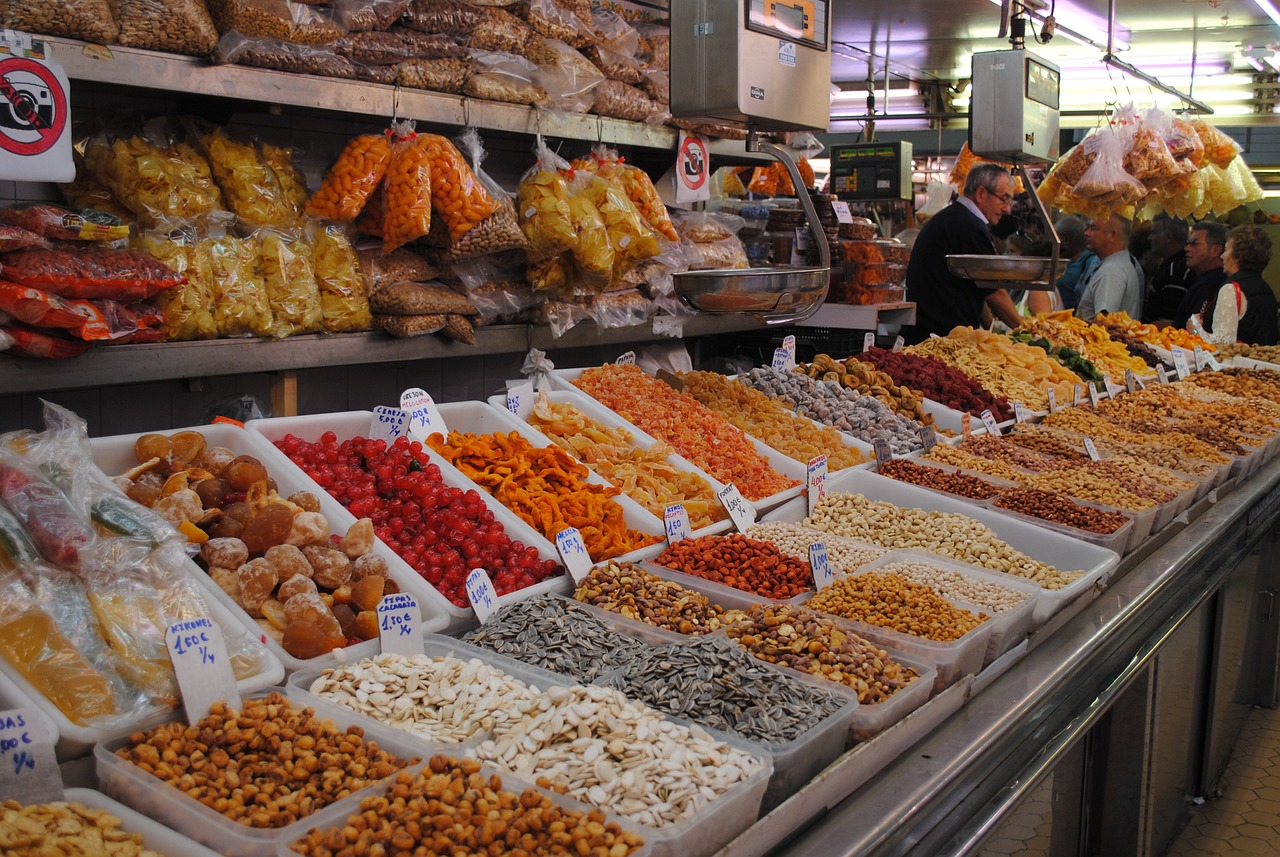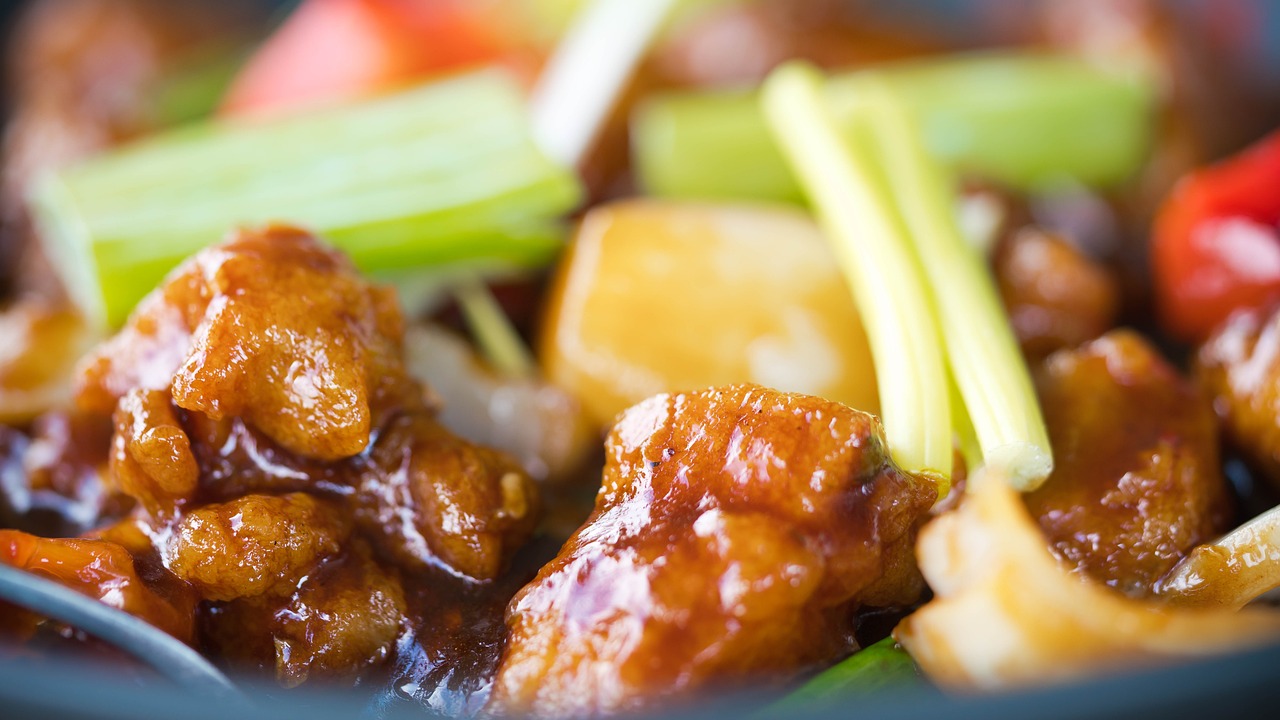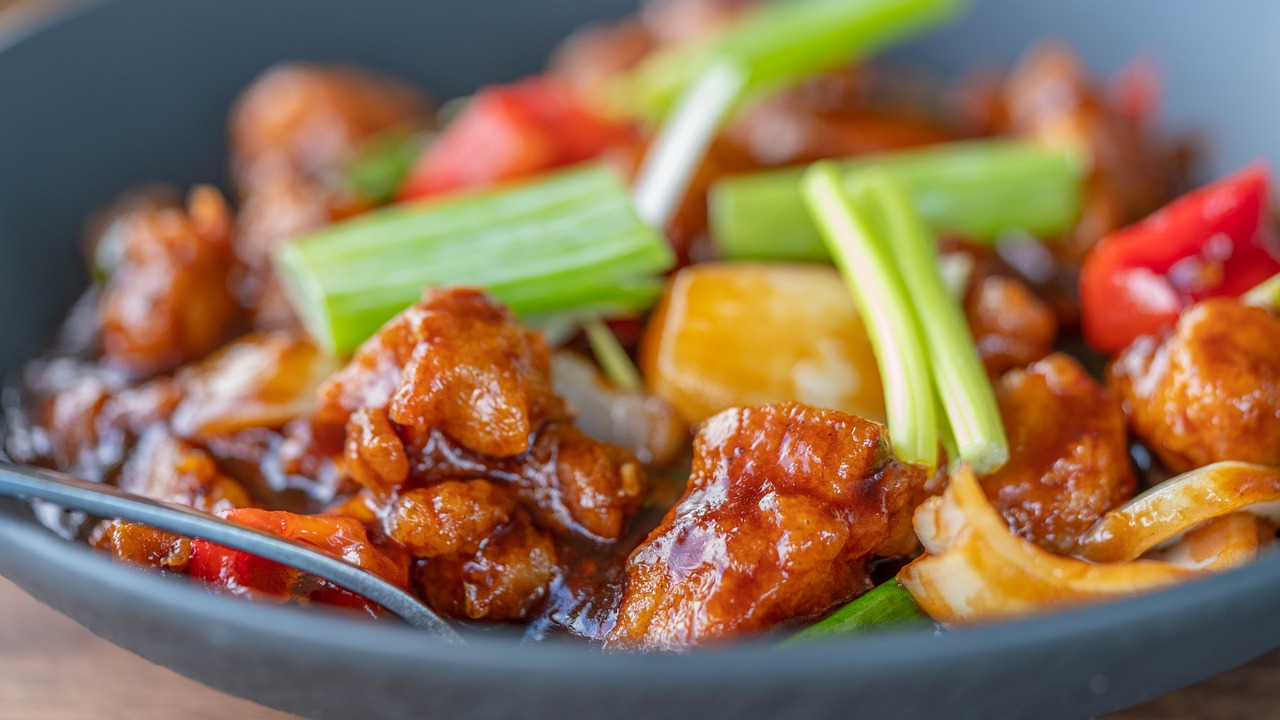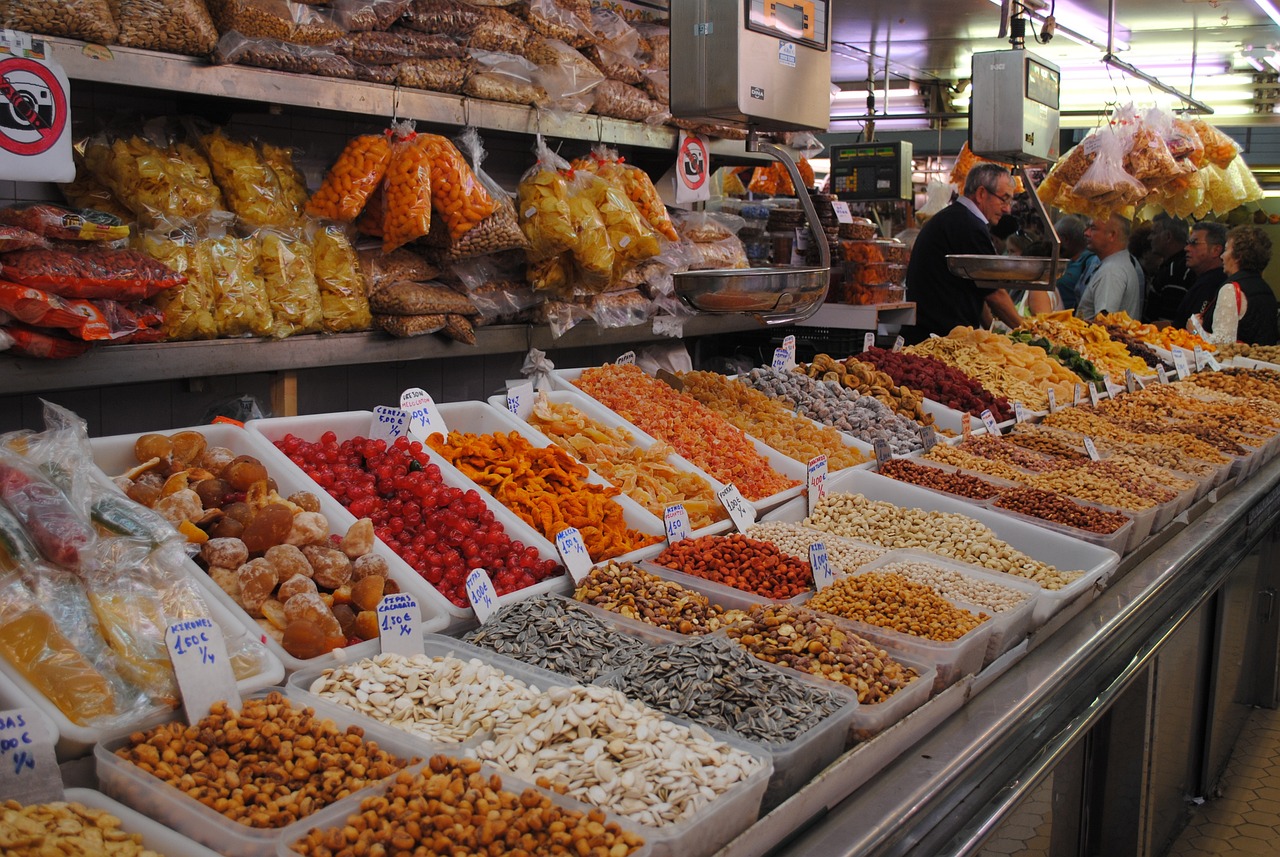Join us on a delectable adventure as we embark on a culinary journey through India, exploring the iconic dish of curry and beyond. At Tastepan.com, we invite you to unlock the flavors of India and experience the richness of its cuisine. From fragrant spice blends to savory curries, our collection of mouthwatering recipes will transport you to the vibrant streets of India. With step-by-step instructions and expert tips, you’ll be able to recreate these tantalizing dishes in your own kitchen. So come along and let your taste buds dance to the vibrant symphony of flavors that India has to offer.

Regional Cuisines of India
India, known for its diverse culture and rich heritage, is also a land of diverse and delicious cuisines. From the spicy flavors of the North to the tangy dishes of the South, from the seafood delights of the West to the aromatic flavors of the East, each region has something unique to offer when it comes to food. In this article, we will take you on a culinary journey through India, exploring the distinct regional cuisines and the mouthwatering dishes they have to offer. So get ready to tantalize your taste buds as we delve into the flavorful world of Indian cuisine!
North Indian Cuisine
Introduction to North Indian Cuisine
North Indian cuisine, also known as Mughlai cuisine, is known for its rich flavors, aromatic spices, and creamy gravies. Influenced by the Mughal era, this cuisine is characterized by the use of dairy products, such as ghee and yogurt, along with a wide variety of spices. The use of wheat, rather than rice, as the staple grain is also a distinguishing feature of North Indian cuisine. From the hearty curries of Punjab to the mouthwatering kebabs of Lucknow, North Indian cuisine offers a plethora of delightful dishes.
Popular North Indian Dishes
When it comes to North Indian cuisine, there are some dishes that simply cannot be missed. Butter Chicken, a creamy tomato-based chicken dish, is a favorite among both locals and tourists. Another popular dish is Palak Paneer, a flavorful combination of spinach and cottage cheese. Chicken Tikka Masala, with its succulent pieces of marinated chicken cooked in a spicy tomato-based sauce, is also a must-try. Other notable dishes include Rogan Josh, a delicious lamb curry, and Chole Masala, a spicy chickpea curry.
Traditional Cooking Techniques
North Indian cuisine is known for its traditional cooking techniques, which add depth and complexity to the dishes. One such technique is Dum Pukht, a slow-cooking method where the ingredients are sealed in a pot and cooked over low heat, allowing the flavors to meld together. Tandoori cooking, where marinated meats and vegetables are cooked in a clay oven called a tandoor, is another important technique in this cuisine. These traditional cooking techniques contribute to the distinctive flavors and textures of North Indian dishes, making them truly unique.

South Indian Cuisine
Introduction to South Indian Cuisine
South Indian cuisine, with its bold flavors and vibrant colors, is a celebration of spices and ingredients like rice and coconut. Predominantly vegetarian, this cuisine is known for its extensive use of spices, such as mustard seeds, curry leaves, and red chilies. The use of coconut, whether in the form of coconut milk, grated coconut, or coconut oil, is also a defining characteristic of South Indian cuisine. From the crispy dosas to the flavorful sambar, South Indian cuisine is a true delight for the senses.
Famous South Indian Dishes
When it comes to South Indian cuisine, there are some dishes that are a must-try. Biryani, a fragrant rice dish cooked with spices and vegetables or meat, is a favorite among food lovers. Dosa, a crispy pancake made from fermented rice and lentil batter, is another iconic dish that is enjoyed both in India and around the world. Tandoori Chicken, marinated in a flavorful blend of spices and cooked in a tandoor, is a popular non-vegetarian dish. The crispy and flavorful samosas, stuffed with spiced potatoes and peas, are also a crowd-pleaser. And let’s not forget about Gulab Jamun, a sweet and syrupy dessert made from milk solids and soaked in sugar syrup.
Influence of Rice and Coconut in South Indian Cuisine
Rice and coconut are the two pillars of South Indian cuisine. Rice is not just a staple grain but also plays a significant role in various dishes, such as idli, a fermented rice and lentil cake; and lemon rice, a tangy and spicy rice preparation. Coconut, whether used as grated coconut, coconut milk, or coconut oil, adds a distinct flavor and texture to South Indian dishes. From the flavorful coconut chutneys to the creamy coconut-based curries, coconut is an integral part of this cuisine. The combination of rice and coconut gives South Indian dishes their unique taste and character.
East Indian Cuisine
Introduction to East Indian Cuisine
East Indian cuisine, also known as Bengali cuisine, is known for its delicate flavors and subtle sweetness. Fish and poultry play a significant role in this cuisine, owing to the abundant rivers and fertile farmlands in the region. Mustard oil, mustard seeds, and poppy seeds are commonly used in cooking, giving the dishes their distinctive taste. From the succulent fish curries to the aromatic biryanis, East Indian cuisine is a culinary delight for seafood lovers.
Notable East Indian Dishes
When it comes to East Indian cuisine, there are some dishes that stand out. Machh’er Jhol, a light and flavorful fish curry cooked with spices and mustard oil, is a staple in Bengali households. Shorshe Ilish, a steamed hilsa fish cooked in a mustard sauce, is a delicacy that is savored by many. Bhapa Doi, a sweet and creamy steamed yogurt dessert, is also a must-try for those with a sweet tooth. The use of mustard seeds, poppy seeds, and other aromatic spices lends a unique flavor profile to East Indian dishes, making them distinct and delicious.
Use of Fish and Poultry in East Indian Cuisine
Fish and poultry are integral parts of East Indian cuisine. The rivers and water bodies in the region provide an abundant supply of fresh fish, which is used to prepare a variety of dishes. From the traditional fish curries to the Bengali-style fish fries, fish is cooked in various ways, each bringing out its natural flavors. Poultry, such as chicken and duck, is also widely consumed in this cuisine. The use of fresh ingredients and the delicate handling of fish and poultry contribute to the exquisite taste and texture of East Indian dishes.

West Indian Cuisine
Introduction to West Indian Cuisine
West Indian cuisine, also known as Goan cuisine, is a melting pot of flavors influenced by Portuguese, Arabian, and Indian cultures. Known for its spicy and tangy flavors, this cuisine showcases the use of spices and seafood. The coastal region provides an abundance of seafood that is incorporated into various dishes. The use of spices, such as cumin, coriander, and black pepper, gives West Indian cuisine its distinct flavor profile. From the fiery vindaloos to the tangy sorpotel, West Indian cuisine is a tantalizing experience for food enthusiasts.
Famous West Indian Dishes
When it comes to West Indian cuisine, there are some dishes that are renowned for their flavors and unique taste. Vindaloo, a spicy and tangy curry made with vinegar, red chilies, and garlic, is an iconic dish that originated in Goa. Sorpotel, a tangy and spicy pork curry, is another popular dish that is a must-try for meat lovers. Goan fish curry, made with coconut milk, tamarind, and spices, is a delightful seafood dish that showcases the flavors of the region. The influence of spices and the abundance of fresh seafood give West Indian dishes their characteristic taste and appeal.
Influence of Spices and Seafood in West Indian Cuisine
Spices and seafood are at the heart of West Indian cuisine. The use of spices, such as cumin, coriander, turmeric, and red chilies, adds depth and complexity to the dishes. The spices are carefully blended to create a harmonious flavor profile that is both spicy and aromatic. Seafood, whether it’s fish, shrimp, or crab, is used in abundance and is cooked in a variety of ways, including curries, fries, and grilled preparations. The combination of spices and seafood in West Indian cuisine creates a unique and memorable culinary experience.
The History of Curry in India
Origins of Curry in India
Curry, a staple in Indian cuisine, has a long and fascinating history. The word “curry” is believed to have originated from the Tamil word “kari,” which means sauce or gravy. The use of spices, such as turmeric, ginger, and black pepper, can be traced back to ancient Indus Valley civilization, where they were used for their medicinal properties. Over time, the use of spices evolved, and different regions in India developed their own unique styles of curries. The concept of curry was further popularized during the British colonial era, leading to its worldwide recognition and adoption.
Evolution of Curry in Indian Cuisine
The evolution of curry in Indian cuisine is a testament to the nation’s rich culinary heritage. From the simple spice blends of ancient times to the complex masalas of today, the use of spices in curries has become an art form. The combination of spices varies from region to region, resulting in a wide variety of curry flavors and styles across India. Some curries are tomato-based, while others are coconut-based. Some are mild and creamy, while others are fiery and robust. The evolution of curry has been shaped by regional influences, climate, and the availability of ingredients, making it a dynamic and diverse part of Indian cuisine.
Variations of Curry across India
India’s cultural diversity is reflected in the wide range of curry variations found across the country. Each region boasts its own unique curry flavors and cooking styles. In the North, curries tend to be rich and creamy, with a focus on meat and dairy products. South Indian curries are known for their tangy and spicy flavors, with a focus on vegetarian and seafood dishes. East Indian curries showcase the delicate flavors of fish and poultry, while West Indian curries feature the fiery and tangy flavors influenced by Portuguese and Arabian cultures. The variations in ingredients, spices, and cooking techniques result in a culinary kaleidoscope of curry flavors that cater to every palate.
Classic Indian Curries
Butter Chicken
Butter Chicken, also known as Murgh Makhani, is a classic North Indian dish that has gained popularity worldwide. This rich and creamy curry is made with marinated and grilled chicken simmered in a tomato-based sauce. The addition of butter and cream gives the dish its signature velvety texture and indulgent taste. The blend of spices, such as garam masala, ginger, and garlic, adds depth and complexity to the curry. Butter Chicken is typically served with naan or rice, making it a satisfying and hearty meal.
Palak Paneer
Palak Paneer is a vegetarian delight that combines the goodness of spinach and cottage cheese. In this classic North Indian dish, spinach is blanched, pureed, and cooked with spices. Cubes of paneer, a type of Indian cheese, are added to the spinach gravy and simmered until tender. The dish is flavored with garlic, ginger, and a blend of aromatic spices, creating a flavorful and nutritious curry. Palak Paneer is best enjoyed with roti or rice, making it a popular choice among vegetarians.
Chicken Tikka Masala
Chicken Tikka Masala is a famous and beloved dish that originated in Britain but has its roots in Indian cuisine. In this dish, marinated and grilled chicken is cooked in a creamy tomato-based sauce. The chicken is flavored with a blend of spices, including paprika, cumin, and coriander, which give it a distinctive taste. The rich and tangy sauce complements the tender chicken, creating a flavorful and satisfying curry. Chicken Tikka Masala is often served with naan or rice, making it a crowd-pleaser at Indian restaurants around the world.
Rogan Josh
Rogan Josh is a flavorful and aromatic lamb curry that originated in the Kashmir region of India. The dish is known for its deep red color and robust flavors. In Rogan Josh, tender pieces of lamb are cooked in a rich and spicy gravy made with onions, tomatoes, and a blend of traditional Kashmiri spices. The slow-cooking process allows the meat to absorb the flavors and become tender and succulent. Rogan Josh is traditionally served with rice or naan, making it a hearty and satisfying meal.
Chole Masala
Chole Masala, also known as Chana Masala, is a popular vegetarian dish that is enjoyed across India. In this flavorful curry, chickpeas are cooked in a thick and spicy tomato-based gravy. The dish is flavored with a blend of Indian spices, such as cumin, coriander, and garam masala, which give it a robust and aromatic taste. Chole Masala is often served with bhatura or rice, making it a satisfying and wholesome meal for vegetarians.
Beyond Curry: Other Must-Try Indian Dishes
Biryani
Biryani is a flavorful and aromatic rice dish that is enjoyed by food enthusiasts around the world. This one-pot dish is made by layering fragrant basmati rice with marinated meat, vegetables, or eggs. The meat or vegetables are cooked with a blend of spices, such as saffron, cardamom, and cloves, which infuse the rice with their flavors. Biryani is typically cooked on low heat, allowing the meat and rice to cook together slowly, resulting in a harmonious blend of flavors. The dish is often garnished with fried onions, nuts, and raisins, adding a delightful crunch and sweetness. Biryani is a feast for the senses and is often served with raita or salan, making it a complete and hearty meal.
Dosa
Dosa, often referred to as the Indian pancake, is a popular South Indian dish that is enjoyed for breakfast and as a snack. Made from fermented rice and lentil batter, dosas are thin and crispy pancakes that are typically served with chutney and sambar. The batter is prepared by soaking rice and lentils overnight and then grinding them into a smooth paste. The fermented batter is spread on a hot griddle and cooked until golden brown and crispy. Dosas can be filled with a variety of ingredients, such as potato masala or paneer, to create different flavors and textures. With its delicate and crispy texture, dosa is a favorite among food lovers and showcases the unique flavors of South Indian cuisine.
Tandoori Chicken
Tandoori Chicken is a beloved Indian dish that showcases the flavors of tandoori cooking. In this dish, chicken pieces are marinated in a mixture of yogurt and spices, which tenderize the meat and infuse it with flavor. The marinated chicken is then cooked in a tandoor, a traditional clay oven that imparts a smoky and charred flavor to the chicken. The result is juicy and succulent chicken with a tantalizing blend of spices. Tandoori Chicken is often served with naan or rice and is a popular choice at Indian restaurants around the world.
Samosa
Samosa is a popular Indian snack that is loved for its crispy exterior and flavorful filling. These triangular-shaped pastries are made by stuffing a mixture of spiced potatoes, peas, and onions into a pastry shell made from flour and water. The filled pastry is then deep-fried until golden brown and crispy. Samosas are typically served with chutney and make for a satisfying and savory snack. They can also be enjoyed as a meal when paired with chole, a spicy chickpea curry.
Gulab Jamun
Gulab Jamun, a sweet and syrupy dessert, is a favorite among those with a sweet tooth. These soft and spongy dumplings are made from a mixture of khoya (milk solids), flour, and cardamom, which are fried until golden brown and then soaked in a sugar syrup flavored with rose water and cardamom. Gulab Jamun is often served warm and is enjoyed on special occasions and festivals. This delectable dessert is a delightful combination of sweet, fragrant, and indulgent flavors.
The Importance of Spices in Indian Cuisine
Introduction to Indian Spices
Indian cuisine is renowned for its wide array of spices, which play a central role in creating the unique flavors and aromas of the dishes. Spices are an integral part of Indian culture and have been used for centuries not only for their taste but also for their medicinal properties. From the vibrant turmeric and the pungent cumin to the fiery red chilies and the aromatic cardamom, Indian spices add depth, complexity, and warmth to the dishes. The art of using spices requires a delicate balance and an understanding of how each spice contributes to the overall flavor profile.
Commonly Used Spices in Indian Cooking
Indian cooking incorporates a multitude of spices, each bringing its own distinct flavor and aroma to the dishes. Some commonly used spices include:
-
Turmeric: Known for its vibrant yellow color, turmeric adds a warm and earthy flavor to dishes. It is also valued for its medicinal properties, such as its anti-inflammatory and antioxidant benefits.
-
Cumin: Cumin seeds are toasted and ground to create a rich and smoky flavor that is commonly used in Indian curries, dals (lentil dishes), and spice blends.
-
Coriander: Coriander seeds and leaves are used in various forms in Indian cooking. The seeds have a warm, citrusy flavor, while the leaves add a fresh and bright note to dishes.
-
Cardamom: Known as the queen of spices, cardamom is prized for its sweet and aromatic flavor. It is commonly used in both sweet and savory dishes, such as biryanis and chai (Indian tea).
-
Red Chilies: Indian cuisine is known for its spicy flavors, and red chilies play a significant role in achieving the heat and intensity. They can be used in whole form, powdered form, or in the form of chili flakes.
These are just a few examples of the vast array of spices used in Indian cooking. The combination of spices and their proportions vary from dish to dish and region to region, resulting in a kaleidoscope of flavors that cater to every palate.
Health Benefits of Indian Spices
Indian spices not only add flavor to dishes but also offer numerous health benefits. Many spices used in Indian cooking have been used in traditional medicine for centuries for their healing properties. For example:
-
Turmeric contains curcumin, a compound known for its anti-inflammatory and antioxidant properties. It has been shown to have potential benefits for heart health, brain health, and reducing the risk of chronic diseases.
-
Cumin has been used in Ayurvedic medicine for its digestive benefits. It aids in digestion, reduces bloating and gas, and helps in the absorption of nutrients from food.
-
Coriander is believed to have antibacterial properties and may help in promoting healthy digestion and reducing gastrointestinal discomfort.
-
Cardamom has been used in traditional medicine for its aromatic and carminative properties. It is known to aid digestion, freshen breath, and provide relief from gastrointestinal issues.
-
Red chilies contain capsaicin, a compound that is believed to have pain-relieving and metabolism-boosting properties. They may also have antioxidant and anti-inflammatory benefits.
These are just a few examples of the health benefits that spices used in Indian cuisine may offer. When used in moderation as part of a balanced diet, Indian spices can not only enhance the flavor of dishes but also contribute to overall health and well-being.
Vegetarian and Vegan Options in Indian Cuisine
Vegetarianism in Indian Culture
Vegetarianism has a long history in Indian culture, with a significant percentage of the population adhering to a vegetarian diet. This is influenced by religious and cultural beliefs, with many Hindus and Jains practicing vegetarianism as a way to promote compassion and ahimsa (non-violence) towards all living beings. As a result, Indian cuisine offers a wide variety of vegetarian dishes that are flavorful, nutritious, and satisfying.
Popular Vegetarian and Vegan Dishes
Indian cuisine offers a treasure trove of vegetarian and vegan dishes, ranging from simple and comforting to elaborate and festive. Some popular vegetarian dishes include:
-
Dal: A staple in Indian households, dal is a lentil-based dish that is enjoyed with rice or roti. It can be prepared in various ways, such as plain dal, dal tadka (tempered with spices), or dal makhani (creamy lentils cooked with butter and cream).
-
Vegetable Biryani: A fragrant rice dish cooked with an assortment of vegetables, spices, and aromatic herbs. It is often garnished with fried onions, nuts, and raisins.
-
Aloo Gobi: A classic North Indian dish that combines potatoes and cauliflower in a flavorful blend of spices. It is often enjoyed with roti or rice.
-
Chana Masala: A spicy and tangy chickpea curry that is popular across India. It is typically enjoyed with bhatura (fried bread) or rice.
-
Baingan Bharta: A smoky and flavorful eggplant dish that is roasted, mashed, and cooked with onions, tomatoes, and spices. It is often enjoyed with roti or rice.
These are just a few examples of the many vegetarian dishes that Indian cuisine has to offer. The use of spices, herbs, and a variety of vegetables makes Indian vegetarian cooking vibrant, flavorful, and satisfying.
Substitutes for Dairy Products in Indian Cooking
Indian cuisine traditionally makes use of dairy products, such as ghee (clarified butter), yogurt, and paneer (Indian cheese). However, there are also many vegan alternatives and substitutes that can be used in Indian cooking. For example:
-
Ghee can be substituted with coconut oil, vegetable oil, or vegan butter in cooking and baking.
-
Yogurt can be replaced with plant-based yogurt alternatives, such as coconut yogurt or almond yogurt, for marinating or in creamy curries.
-
Paneer can be substituted with tofu or tempeh in various dishes. These plant-based alternatives can be marinated and cooked in a similar way to paneer, adding their own unique flavors and textures to the dishes.
By using these substitutes, individuals following a vegan lifestyle can enjoy the flavors and textures of traditional Indian dishes without compromising on their dietary choices.
In conclusion, the rich and diverse regional cuisines of India offer a gastronomic adventure like no other. From the bold and spicy flavors of North Indian cuisine to the tangy and aromatic dishes of South India, from the delicate flavors of East Indian cuisine to the fiery and flavorful delights of West Indian cuisine, there is something for everyone to savor. Indian cuisine, with its extensive use of spices, diverse ingredients, and cultural influences, is a treasure trove of delicious and nutritious dishes that cater to all tastes and dietary preferences. So embark on a culinary journey through India and be prepared to be amazed and delighted by the flavors, aromas, and colors that await you!

